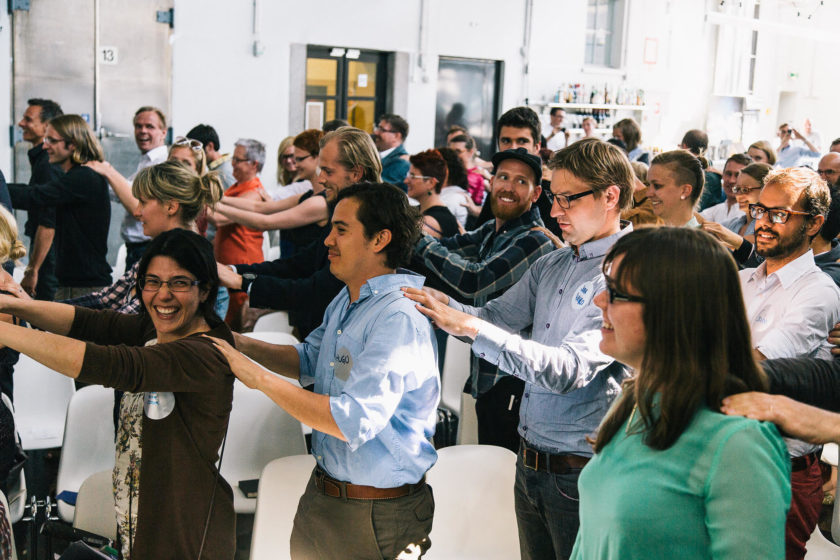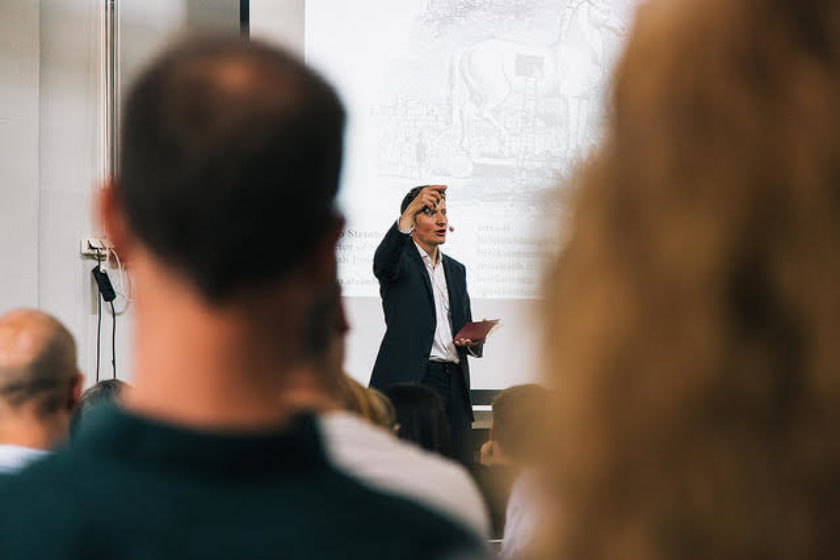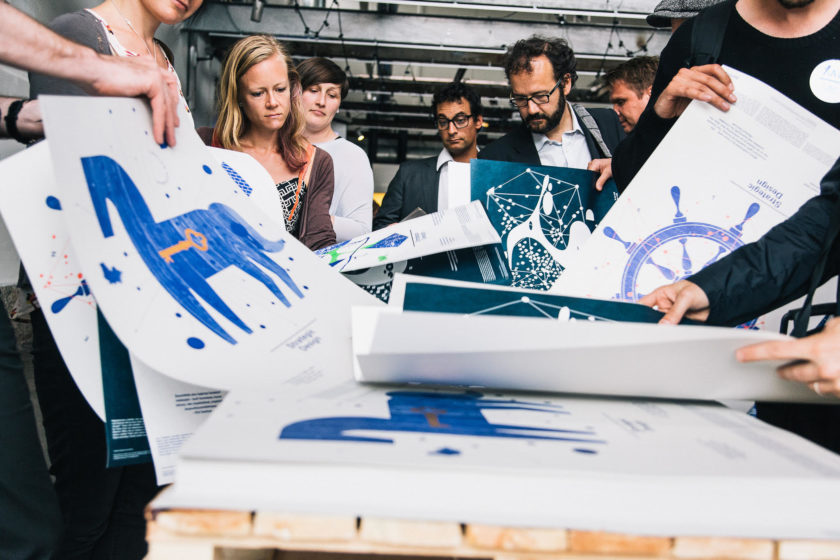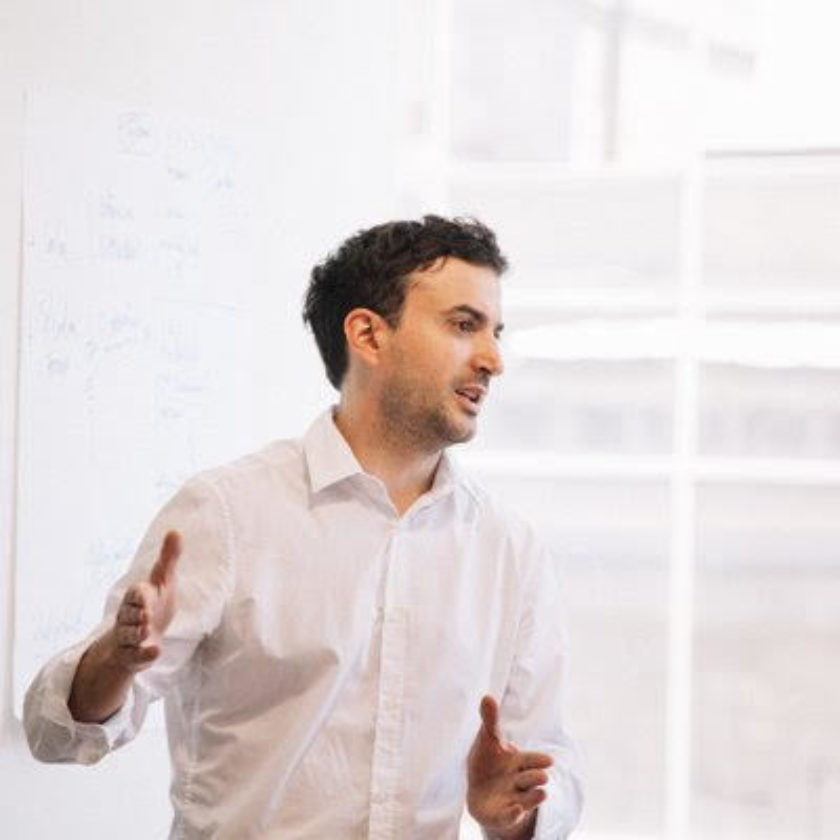Lab Legacies is our new debate series on lab politics and innovation craft.
Our first edition featured two former government innovation lab leaders and States of Change faculty members - Marco Steinberg (Finland), previously director of Helsinki Design Lab, and Juan Felipe Lopez (Chile), previously executive director of Laboratorio de Gobierno - and was led by Jesper Christiansen, Nesta’s head of Strategy and Development.
We talked about the politics of innovation in government; from finding champions of your work, to choosing when to stand your ground, and when innovation practitioners should cut the jargon and speak in the language of the people they are working with.
Watch the full conversation above, or read on for our overview of the key insights
What was the mandate for your innovation work?
Juan Felipe: We had a mandate from the presidential level when we set up LabGob. So, on the one hand, we had support from high up in government, but on the other, we weren’t at the very top - forcing our agenda on everyone below us. That’s not what we would have wanted and I don’t think we would have had the success we did if we were positioned that way.
"We had no mandate from government so we needed to get a foot in the door."
What was the role of your lab?
Juan Felipe: We may have started with a mandate from the presidential level, but not everyone wanted us to exist! In just three years, we had to set up an entirely new institution and prove its usefulness. This meant we had to be focused from the very beginning on what we were looking to achieve.
Our key early question - which is often forgotten - is why are we setting up a lab? We didn’t want this to be an abstract idea with no tangible purpose. It had to have clear parameters around what our role in government would be. This needed to be broad enough to get buy in from groups across the civil service. We decided the best focus, for us, would be to concentrate our efforts on tangible, concrete projects. This way, we could hit the ground running; testing our approaches and skills as early as possible and begin to prove our worth.
Marco Steinberg: Starting the Helsinki Design Lab was a platform to expand the use of design skills into the bureaucracy of government. Our aim was to think of new solutions rather than simply tweak old, existing ideas. When we started, there was no real knowledge base to build upon. We had to test our own ideas out in practice. We picked some key areas that needed looking at, the big, seemingly intractable issues society faced; aging, education and sustainability. We wanted to get citizens, politicians and designers together having a proper conversation. To that end, we put on events to get them all literally in the same room.
How did you nurture your influence and mandate?
Marco Steinberg: we were on the outside looking in, so we looked at it as a matter of ‘flirt, date or marry’? You flirt with someone you like, then you might date and eventually you might marry. You don’t really propose to someone on the first day you meet them - even if they liked you, you’d scare them off! So, we really tried to let the work speak for itself, and in that sense, we were smuggling our ideas in by stealth. We tried to speak in terms that government understood, cutting the jargon and speaking the same language as them. It was only when they got interested that we would begin to share our approach and methods. Show before tell! It allowed us to build up interest and momentum across departments and we always had a track record of projects we could fall back on to support what we were saying.
"There were times when we had to really fight our corner on what we were there to achieve and having a clear idea what that was, was extremely useful."
In that sense, advocacy is a key aspect of innovation work in government. Without anyone to champion your cause it is easy to fall off the agenda, or end up sidelined. Having a clear purpose makes that much easier to do. We also had to be stubborn to push against the existing government structures, we couldn’t cave into every push back. This meant we sometimes needed to ‘work below the radar’ across different projects and departments in lots of different ways. This was our attempt to see what would stick and what wouldn’t work without ruffling too many feathers.
What advice would you give to people with less of a mandate?
Juan Felipe: it doesn’t matter where you are in government (or even if you are out of it). Make yourself useful or relevant! Prove this to people and get them on board. Soon they will be vouching for your methods and snowballing the whole process, getting other people on board. Secondly, the benefits of someone who is politically savvy can’t be underestimated; someone who understands the political landscape and who speaks in the same terms as government. This will help immensely when it comes to proving your worth.
Marco Steinberg: It’s all about doing. Not just talking. Work on projects collaboratively and show your worth. We would always aim to manage expectations so that we could exceed them. It helped us build momentum across different departments and within different circles.
"Go small and do it well. Don’t aim for the moon and fluff it."
How did you deal with political change?
Juan Felipe: In Chile, our lab was founded by a socialist government but it’s existence today under a right-wing president is a testament to our work and our ability to convince people of the value of that work. It would have been easy for the right-wing government to have wound up the department in the name of ‘government efficiency’. So, we had to do several things to navigate that political change.
The first, it wasn’t a foregone conclusion who would be voted in! We made contact and built a rapport with all the presidential candidates from across the spectrum. Our purpose was to understand their aims and see how we could help their agenda.
Secondly, we documented everything that we were doing. We asked external companies to assess and evaluate our projects and build a body of evidence around where we were making a difference. We wanted to be able to prove our value.
Thirdly, we set up an independent steering group to help guide the work of the lab in the long term, to help ride the ebb and flow of governments. Alongside this, we also spread our ideas throughout the organisations we were working in. We hedged. If we were closed down then at least the seeds of our way of work would be spread by cheerleaders and champions across government.
Lastly, it’s easy to assume that just because government changes then everything else changed too. Because we could make the case that our objectives and skills were useful to the state and not just to one particular administration, we had a role to play beyond our founding administration.
What methods helped show your value to skeptics?
Marco Steinberg: There is an easy answer for this and that is: you show quality in everything you do! The work should speak for itself. You will struggle if you have to dress up bad work so, in that sense, your communications work is tied in with the quality of the work you do. It’s inextricably linked. We would put the utmost care into the design of even the smaller things, like the invitations to our events, the card it was printed on.
What does the success of an innovation lab look like?
Marco Steinberg: In the immediate future, success has been in providing the space to have this whole conversation around innovation. If we get people talking and open doors for the next generation, more success will follow. Getting that foot in the door has got the ball rolling in a big way. As far as long term success goes; innovation labs should cease to exist! As it is, our approach to problem solving, the work needed to make an organisation resilient and able to constantly adapt, is still a new way of doing things. Once that way of doing things is no longer ‘different’ and it becomes the norm, we can consider that a job well done.
Juan Felipe: Success will of course look different to different people. For us, the short term success of LabGob was about citizen involvement in the process of government. Frankly, it was also about surviving a change of government! Proving that we had value to how government worked between two very different ideologies. In the long term, I agree with Marco, success is seeing this sort of work in the mainstream. The new normal.
Lastly, is innovation a political beast?
Marco Steinberg: Absolutely! You can’t pretend it’s not political! It’s about how government works and that is inherently political. Social services are not neutral. You want to make services better; better for who? For everyone? It doesn’t always work that way.
"With user centred design, civil servants end up being more readily confronted with the ideology of their work. The end user is no longer something abstract but very much the focus of policy design."
This starts a different conversation about the political nature of what they do, which can be interesting, for sure.
Jesper Christiansen: interestingly this is often forgotten about - usually innovation is only seen as a way to improve the administration without recognising that it changes the relationship between administration and the political system. Public innovation should be a marriage of the two!
Next in the Lab Legacy series is a conversation between Chelsea Mauldin, Executive Director at Public Policy Lab in New York, and Giulio Quaggiotto, Director of Community at Climate KIC & Research Affiliate at MIT. Join us, as they will be discussing how to position an innovation lab to have the greatest effect on government.



